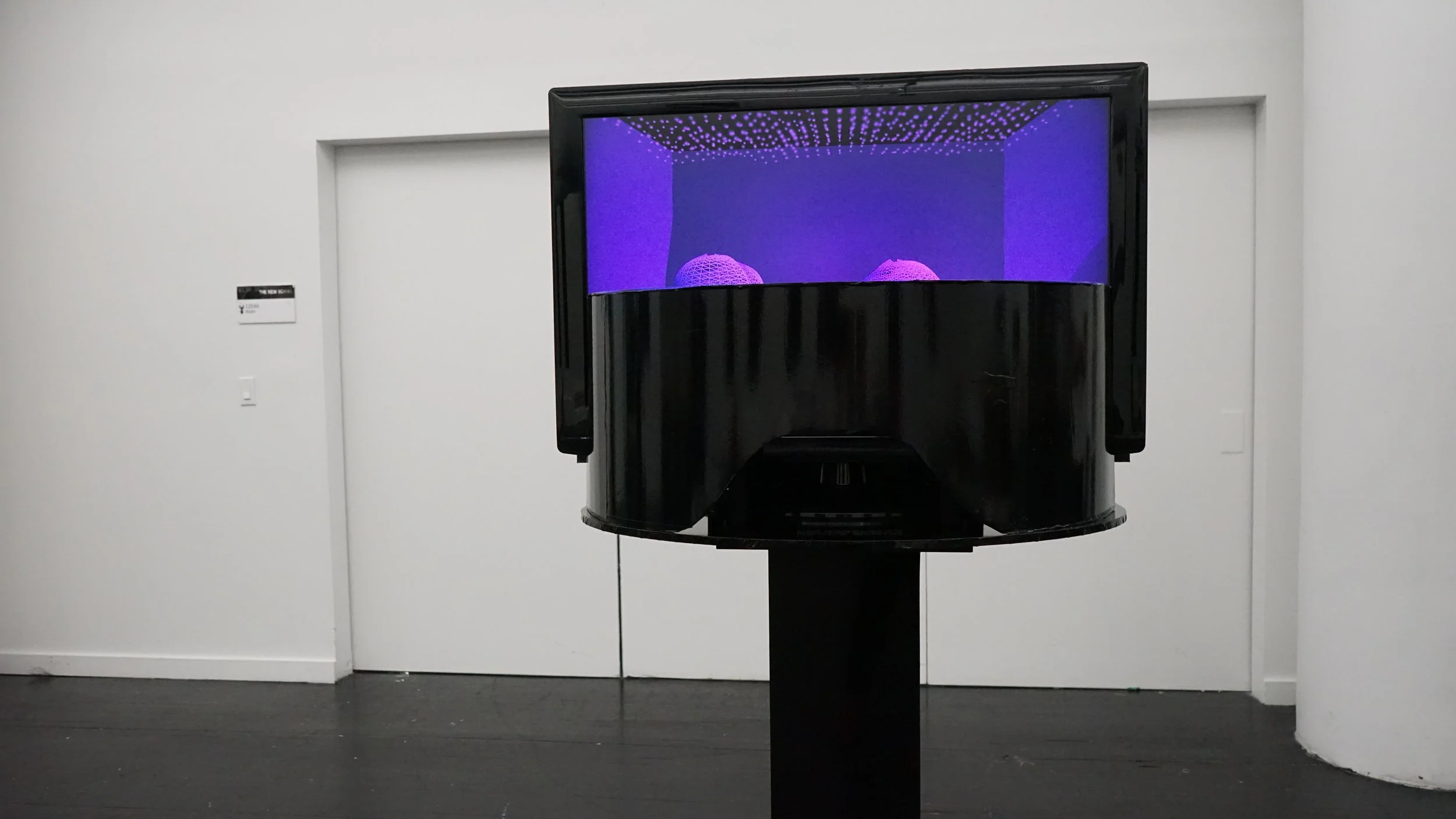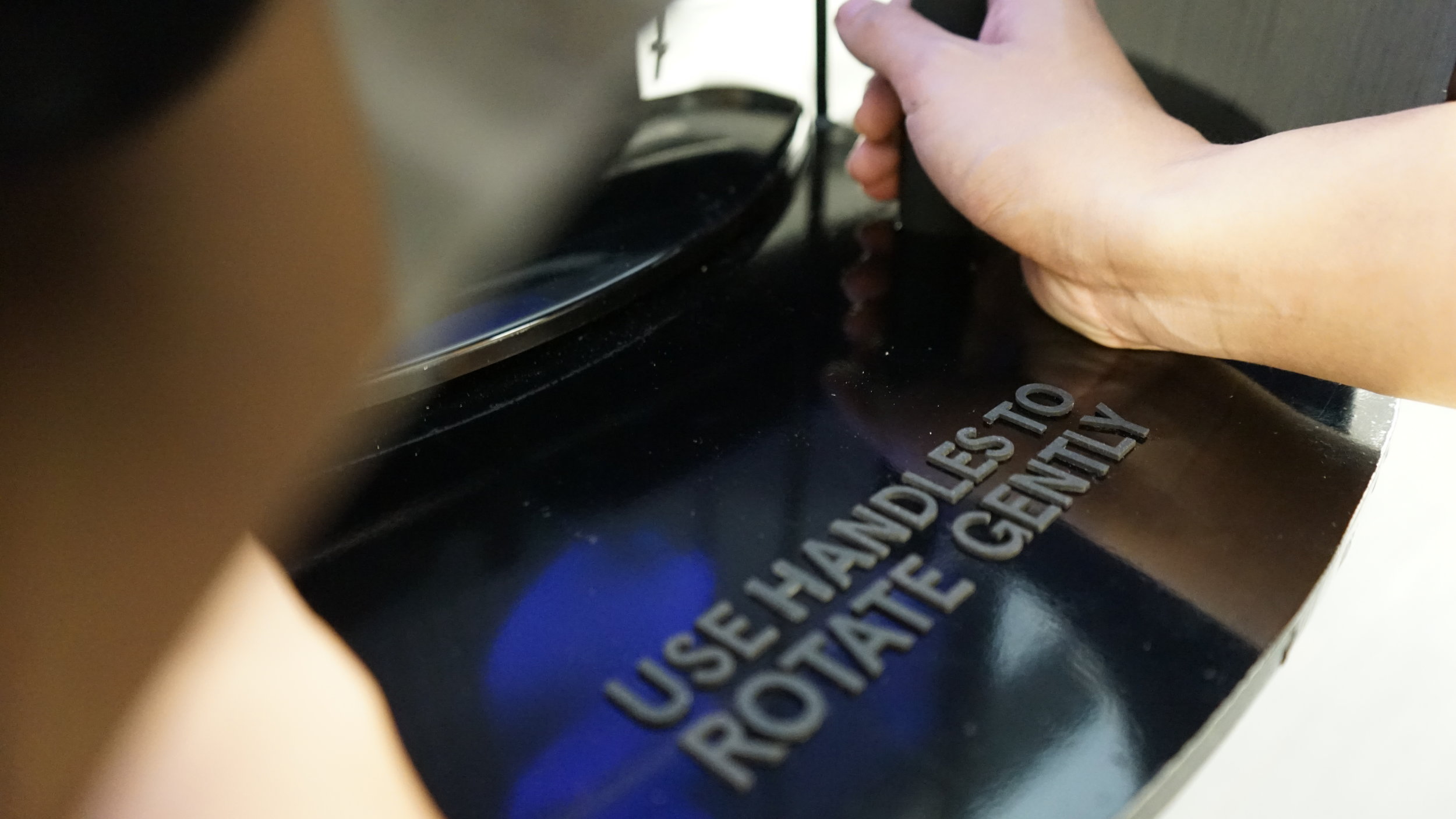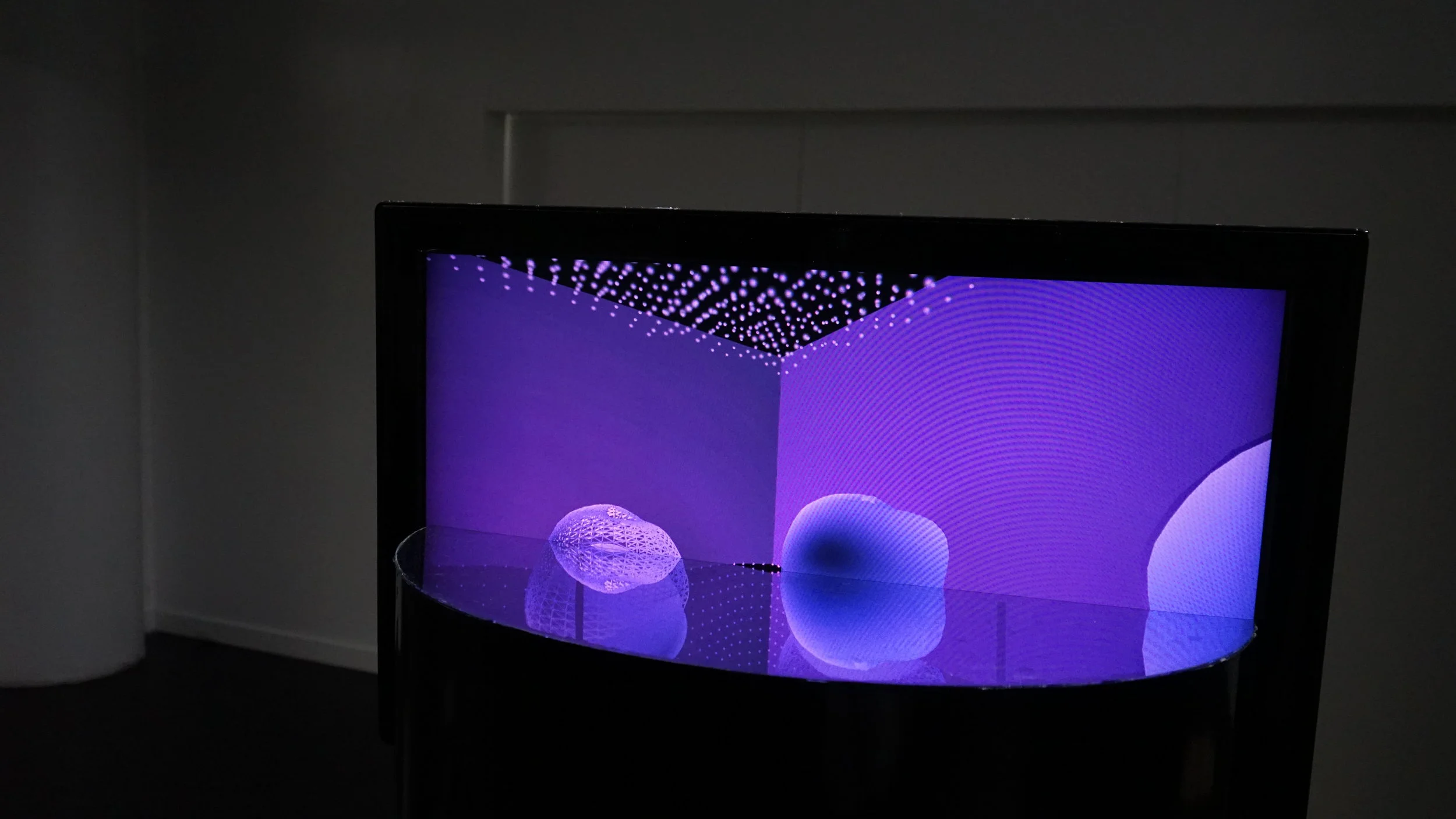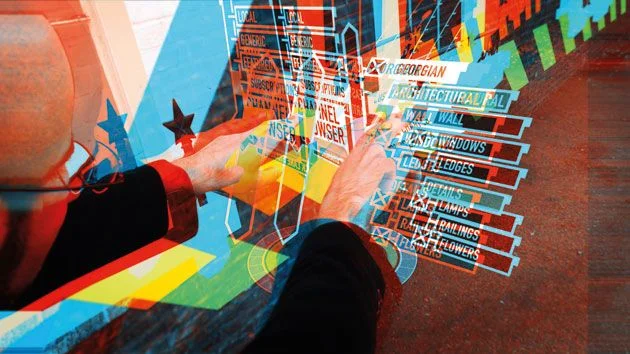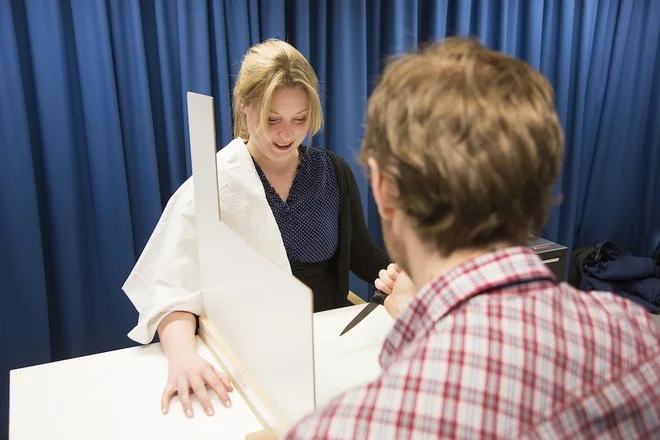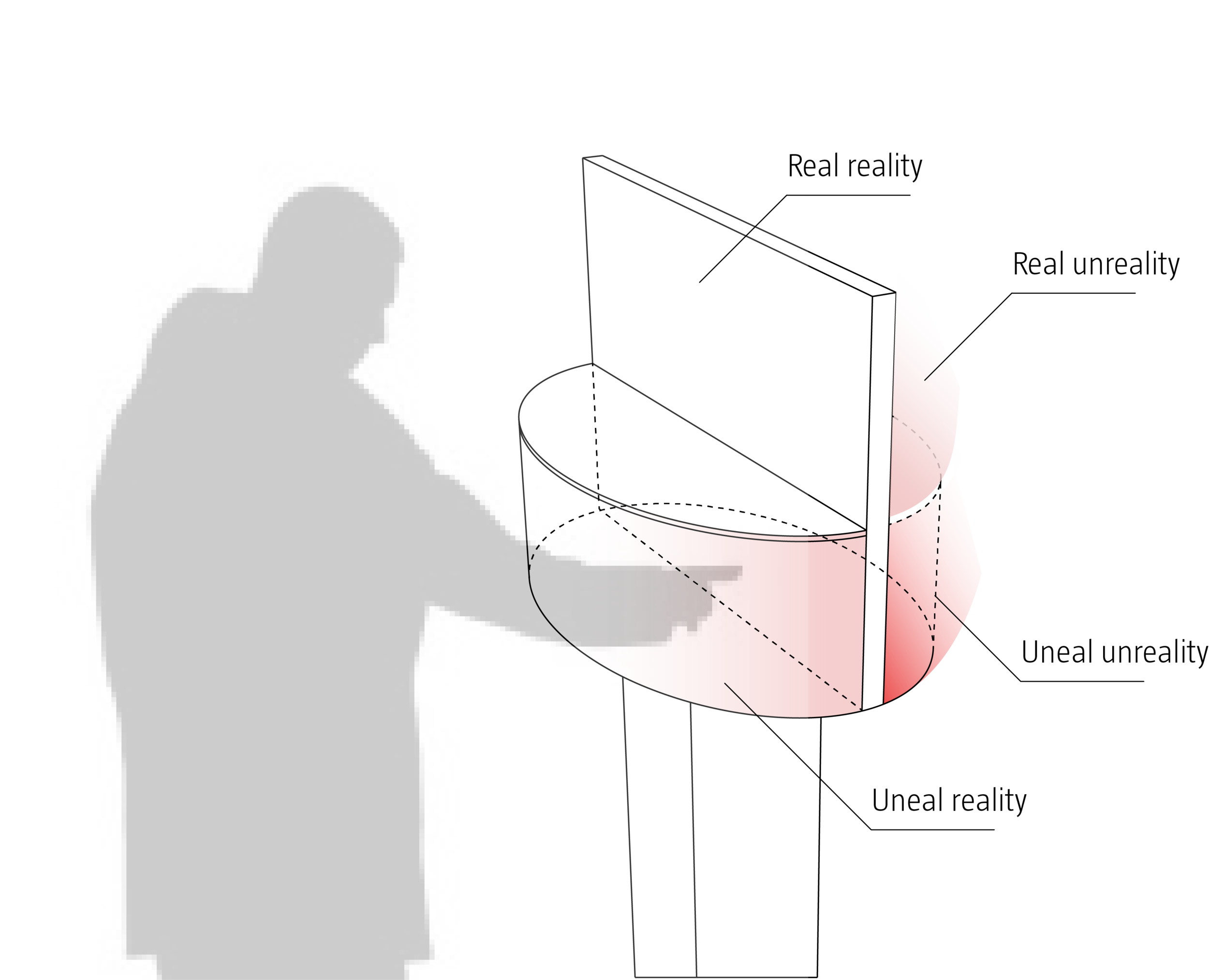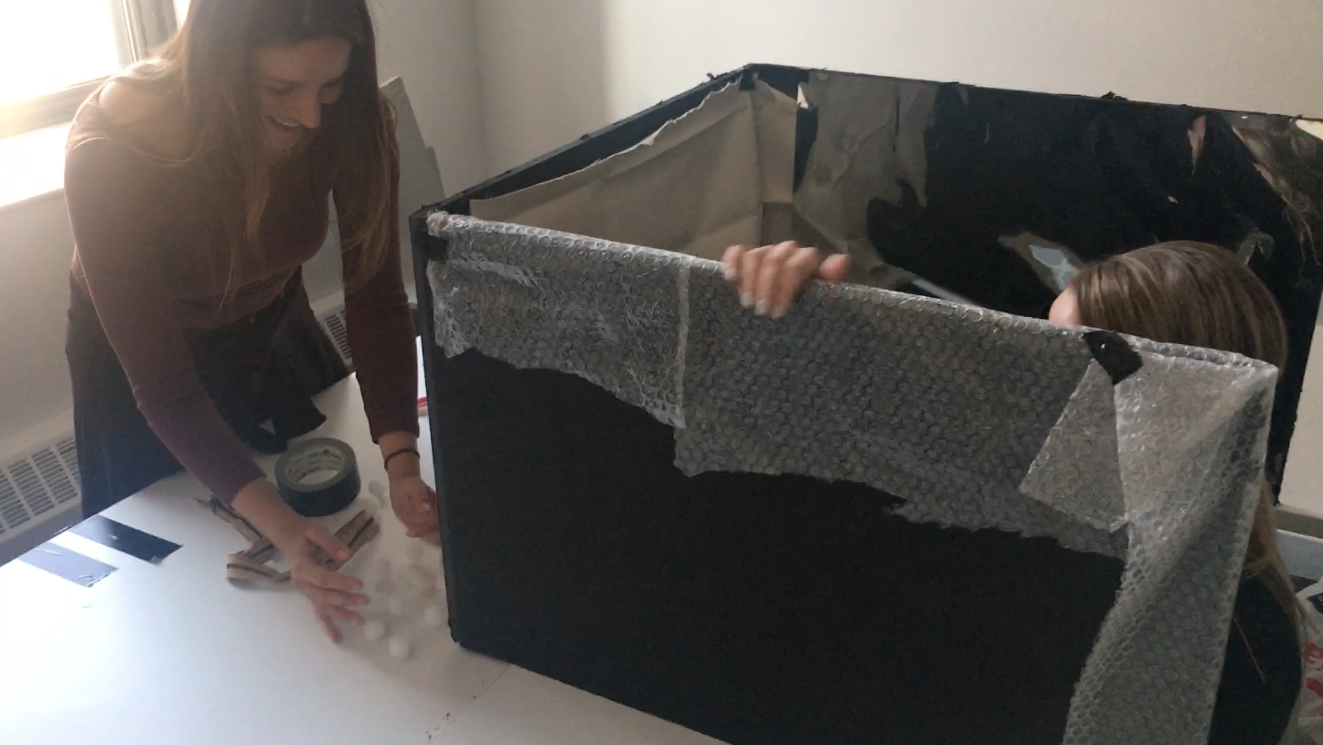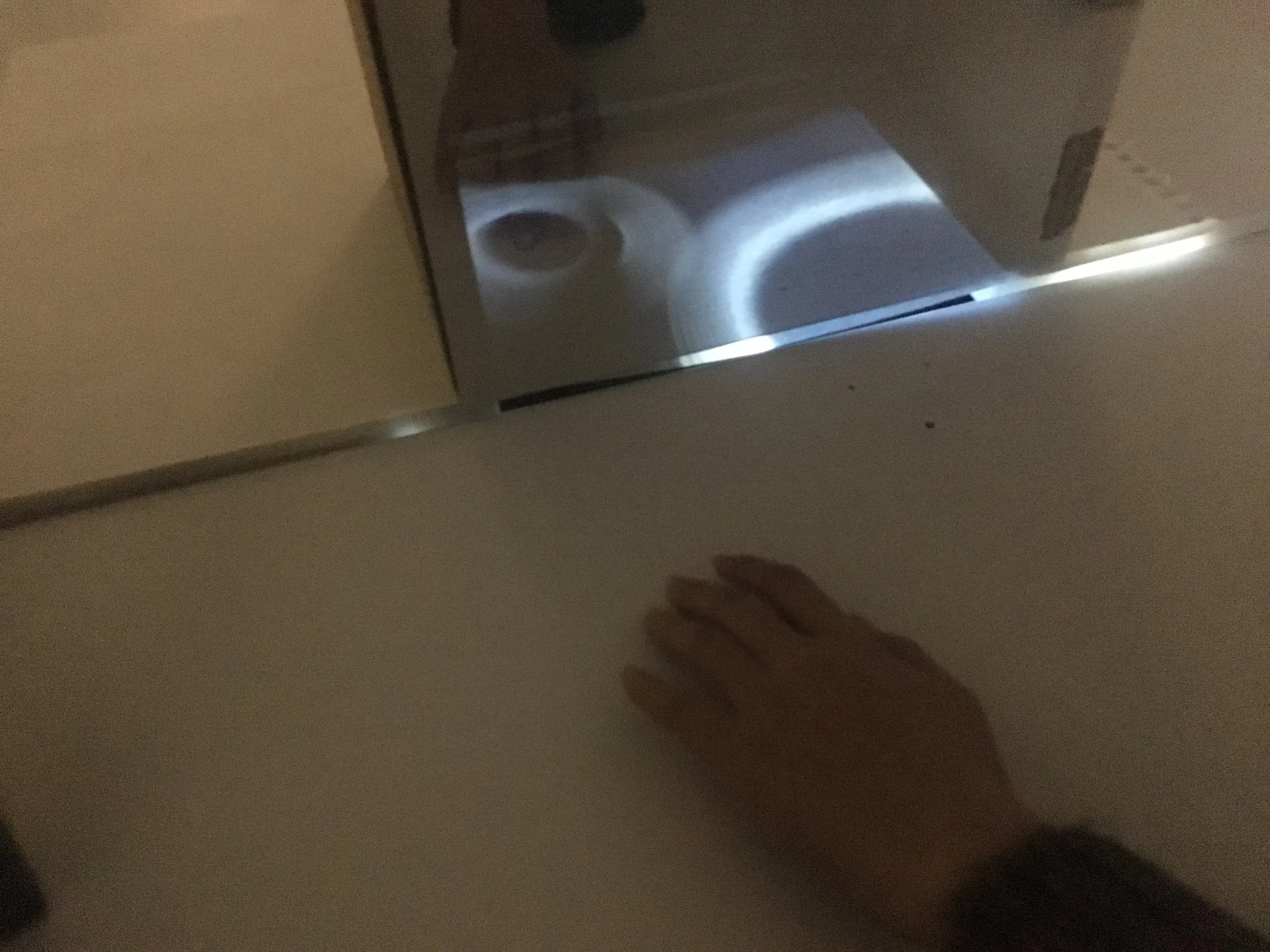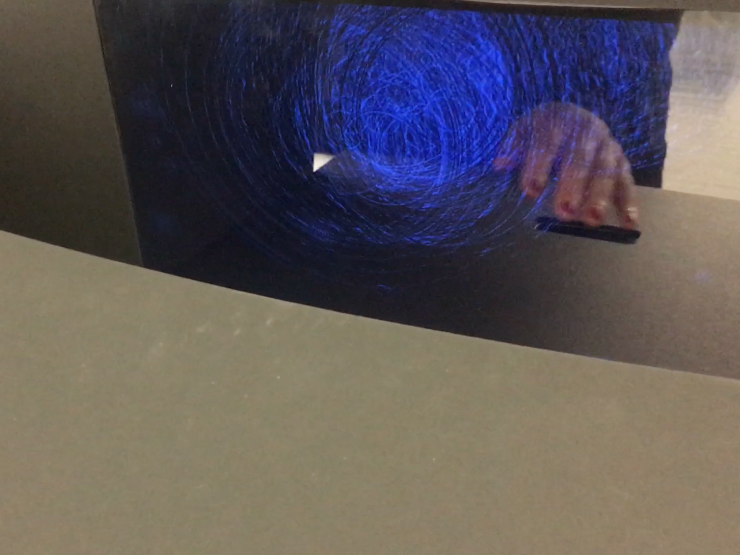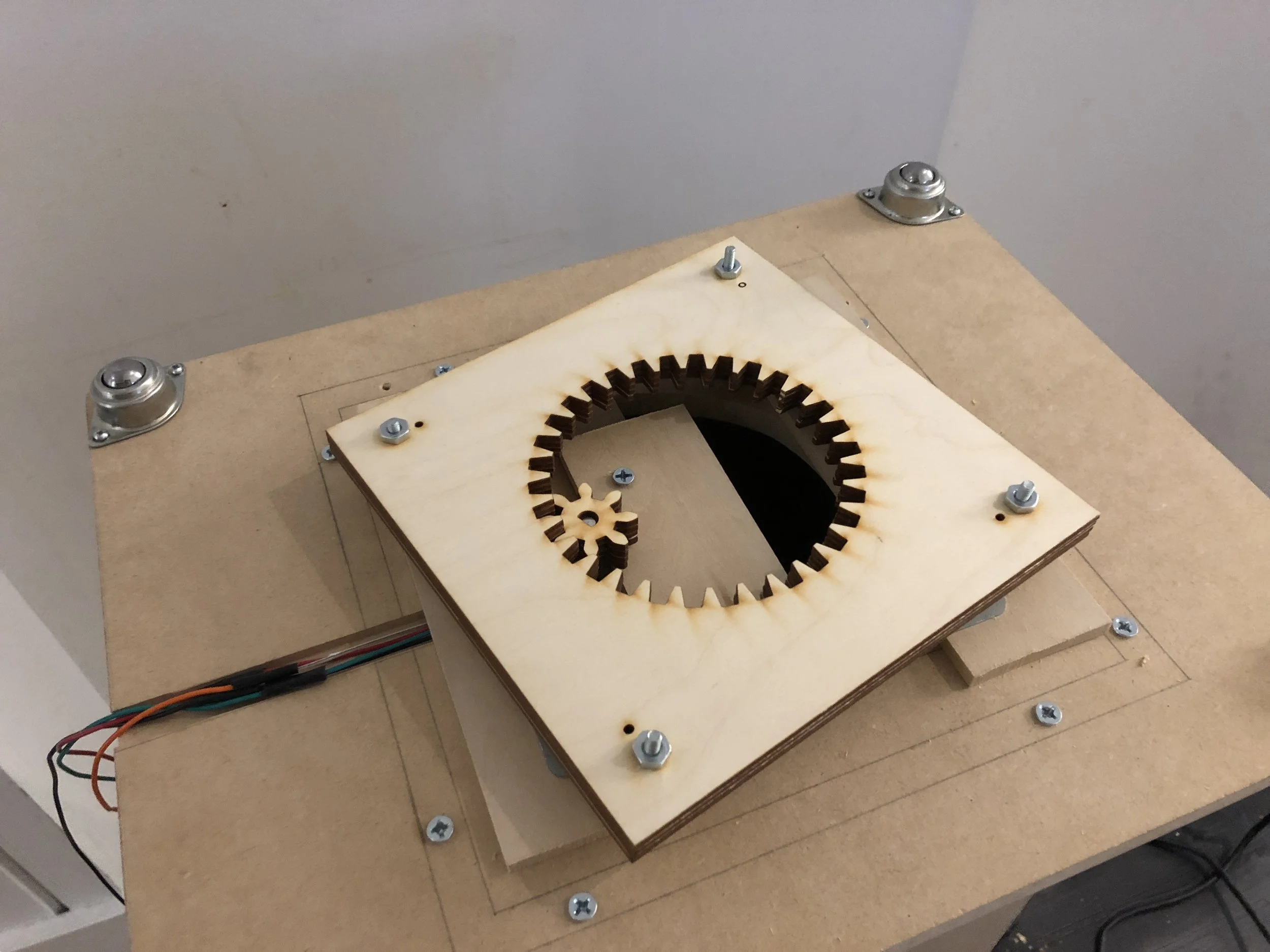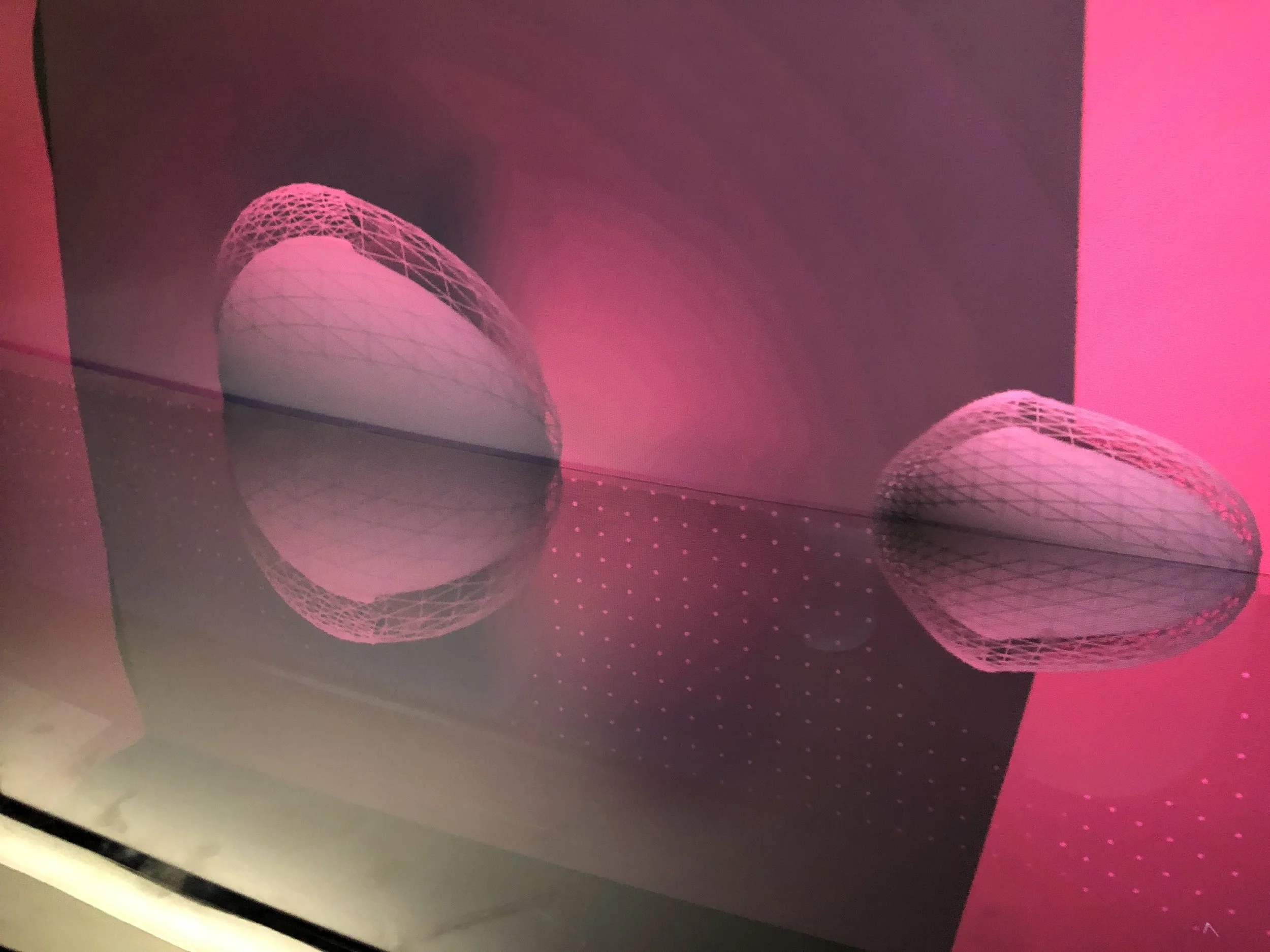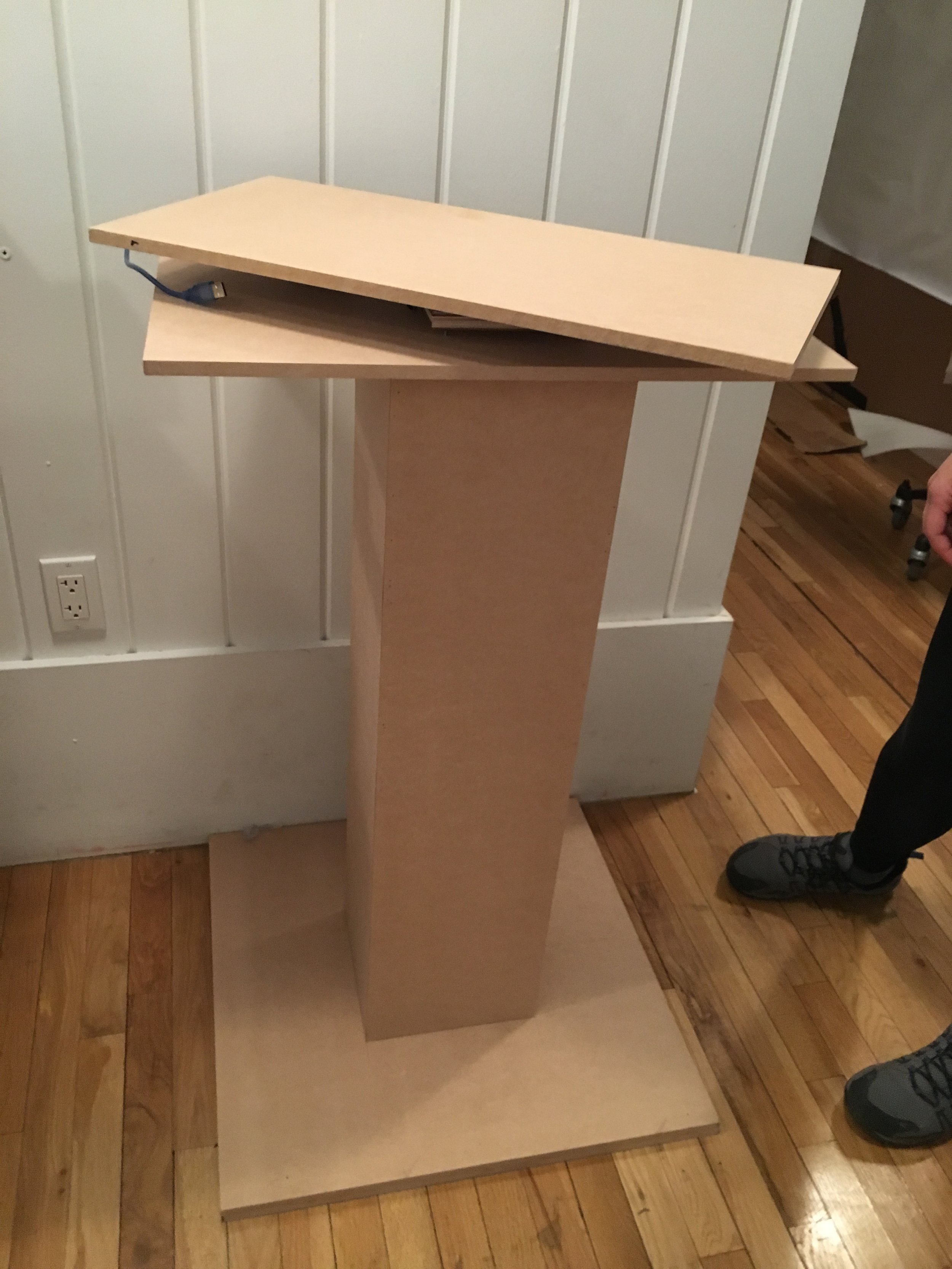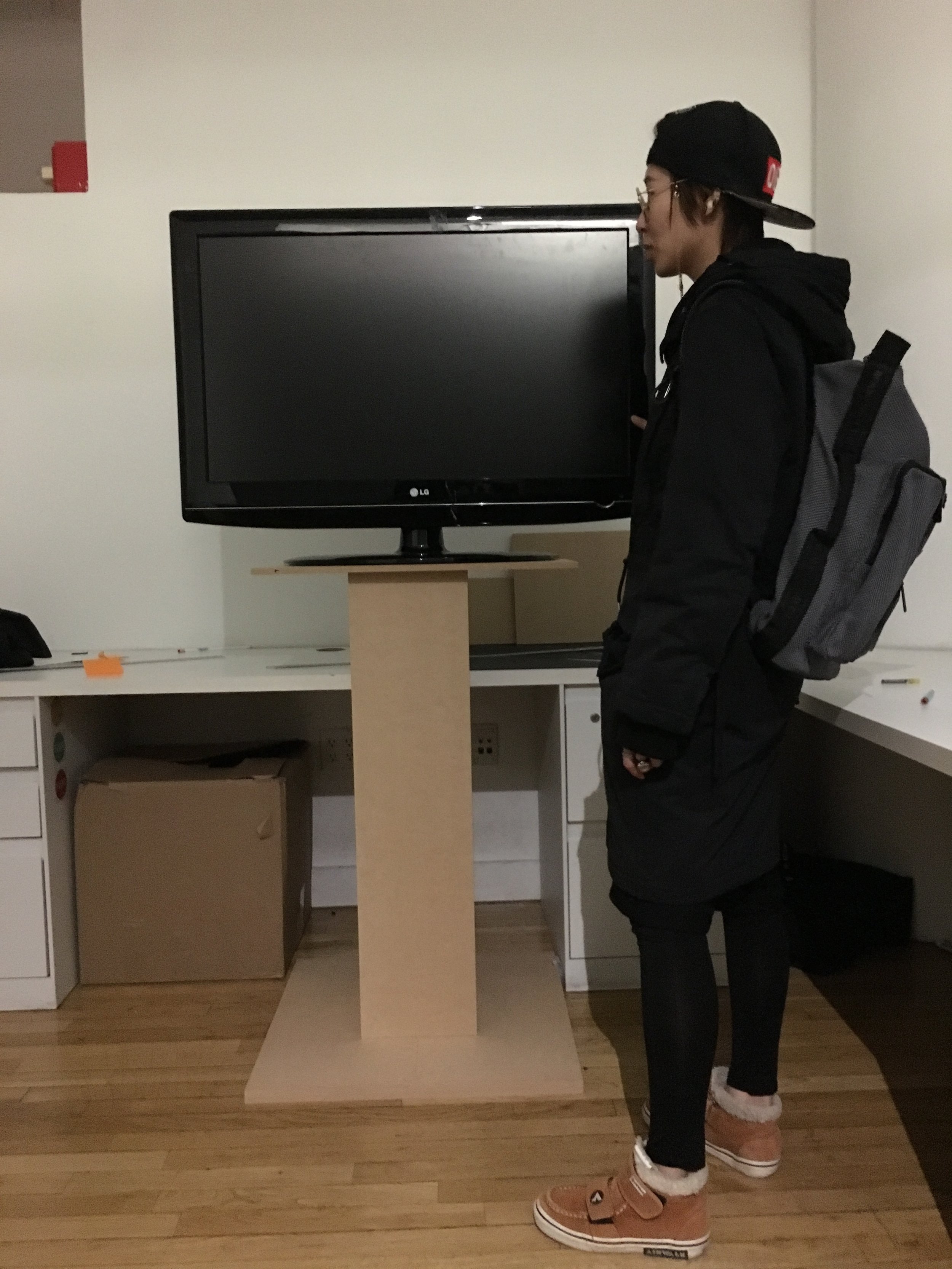Boundless
An exploration on alternative realities
Our understanding of the reality we exist in is largely based on two of the most important human perceptual systems—the visual and the haptic. I believe that by separating our two perceptual systems, our minds are able to create different versions of the reality we’re in. Inspired by the short story School of Constructed Realities by Dunne & Raby, I adapted the taxonomy of two pairs of opposites — “real” and “unreal”, “reality” and “unreality” — as labels for a matrix of worlds. This thesis project is an exploration on new ways of interfacing with said world.
Through manipulating the presence of visual and haptic perceptual inputs, my installation establishes a stage that blurs the boundary between the real and the unreal. Featuring a see-through two way mirror and digital display as the perceived dividers between the tangible world and the reality behind it, this device presents different worlds simultaneously through optical illusion. As a portal that connects the matrix of realities, this installation challenges the audience’s method of perception through the construction of objective mental images, and inspires the audiences to leave on a quest to find new opportunities to access these realities.
View a full documentation on the design process of this project HERE.
Ideation
More than three decades ago, artists and philosophers such as Jean Baudrillard had started the discussion around the concept of a Hyper Reality, one in which one is unable to distinguish reality from a simulation. They explored a blurred line between the physical world and the reality that our mind let us see. This conversation is carried on with the development and recent advancement of VR, AR and MR technologies. As the experimental film Hyper Reality by Keiichi Matsuda depicted, we cannot help but ask the question: what would happen to a world, where you no longer know if you’re experiencing the physical or simply the metaphysical? To that note, I hope this project Boundless can be a part of a bigger discussion around the de nition and boundaries of our realities.
“Boundless” presents instances where what you see cannot be experienced with the haptic perceptual system, and what you feel are in contradiction with what your eyes show you. If we are not able to determine whether one perceptual system overpowers the other, I find it interesting to study how Augmented Reality may further complicates our understanding, as we begin to combine the two perceptual systems. The simultaneous presence of both visual cues and tangible physical environments.
As some may argue, according to The Simulation Hypothesis, we are all living in a virtual construct where the laws of physics is not discovered but de ned, and our knowledge of the world is simply what we needed to know of. This installation does not simply answer which reality is more real than the others, but regards each variation equally, and seeks to compare and contrast them through creating a portal to access all realities simultaneously.
Hyper Reality, Keiichi Matsuda
Phantom limb experiment, Image credit: Gustav Mårtensson
Concept
“Boundless” is a sculptural installation composed of a rotating digital display and a see-through two way mirror, creating a matrix of real and unreal worlds which are represented through algorithmic simulations and optical illusion. This project experiments with the boundaries between the reality we see and reality we feel, and act as a portal to interface with these alternative realities. I created my own taxonomy to describe this matrix of realities created as a result of combing the two perceptual systems. Within this system, all four variations of the world are constructed from mental images by the audiences; the terms — real and unreal — are only describing the extent of reliability of our perceptual system, but not the actuality of these worlds, as they are equally constructs of our mental images.
Prototyping and fabrication
Stay tuned for more documentation on the production and demonstration of the final installation!
Early Prototype
This full-scale functional prototype is an early realization of the previous iteration of Boundless,
presented at the Thesis Pop-Up Exhibition in December 2017.
MFADT 2018 20th Anniversary
UNFOLDING Thesis Exhibition
I was the Exhibition Lead in producing the 20th Anniversary of MFADT End-of-Year Thesis Show. Working alongside co-lead Neil Yang and collaborating with Show masters Paolo Villanueva and Kuldeep Gohel (MFADT '18), we led a team of 19 students to curate and produce three main events: the Exhibition, Interactive Showcase, and Symposium, exhibiting the work of over 100 graduating students from the Design and Technology program.
The Exhibition is a five day event, facing the Parsons community as well as practitioners in the creative industry. We hosted over 400 visitors on the opening reception on May 15th.
Video courtesy: Zhongyue Zon Zhang, MFADT ‘'18


